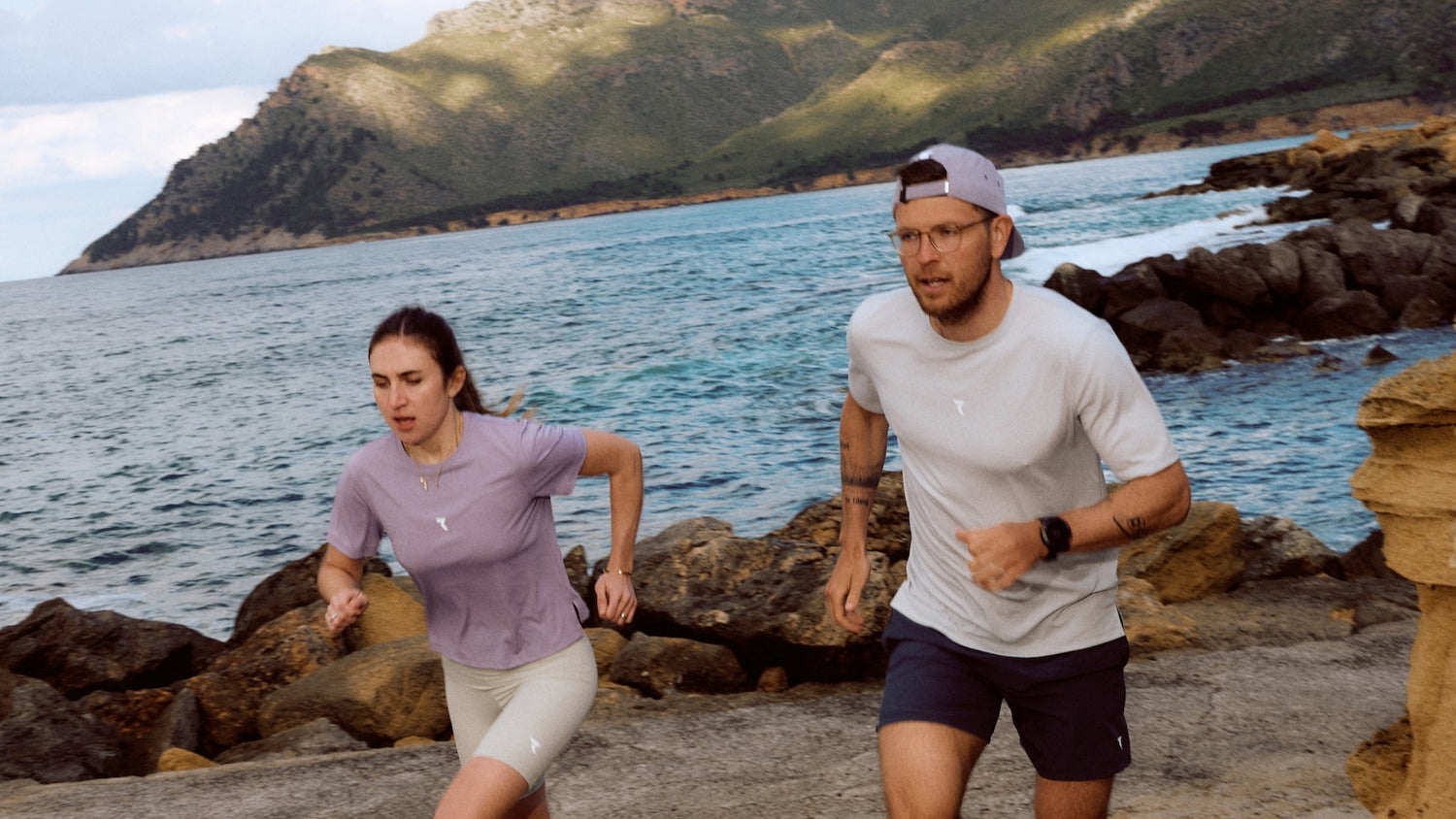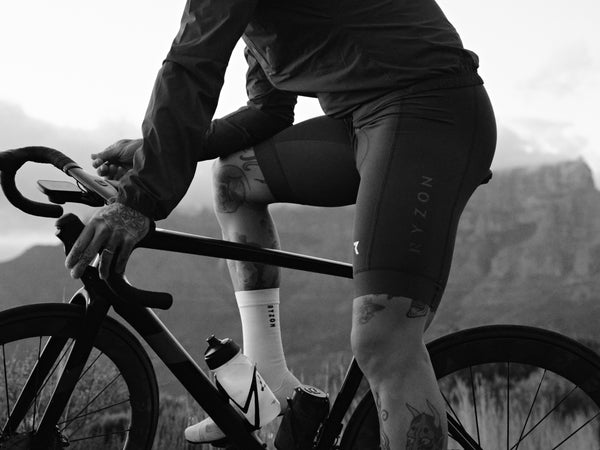What do I need to pay attention to when...
...choosing the right running clothing?
Running is more than just exercise – it's freedom, focus, and balance. Whether you're taking your first steps on the track, ambitiously training for a new personal best, or regularly tackling marathon distances, choosing the right running clothing has a direct impact on your running experience. From temperature regulation and moisture management to fit – we'll show you what really matters when looking for functional, durable, and high-quality running clothing.
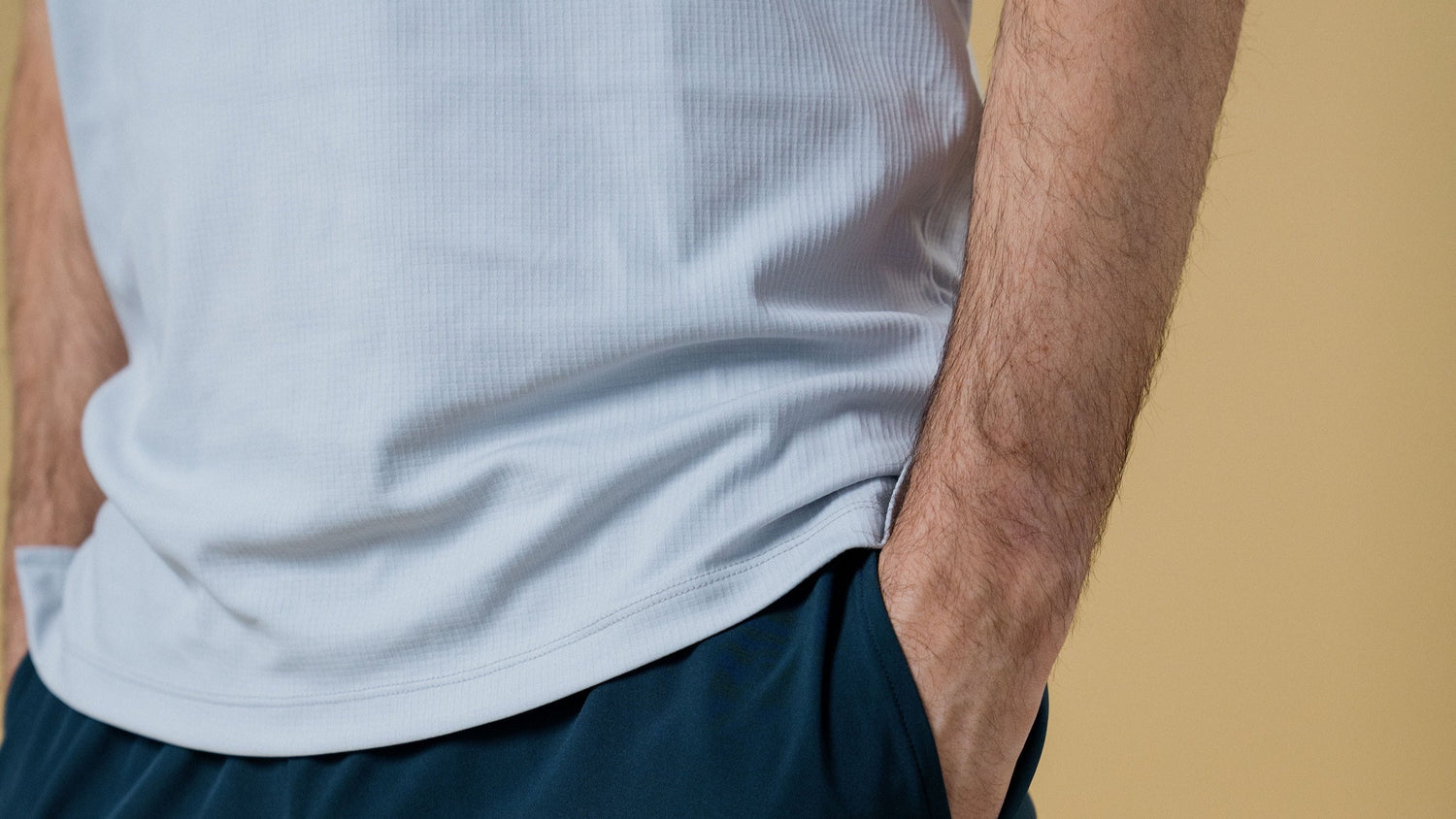
Material
Good running clothing is made of highly functional materials that effectively wick sweat away from the body and dry quickly. This keeps your skin dry even during intense exercise, and you don't get cold. Look for specific features depending on the season: mesh zones for summer, thermal fabrics for cooler days, or windbreakers for changeable weather.
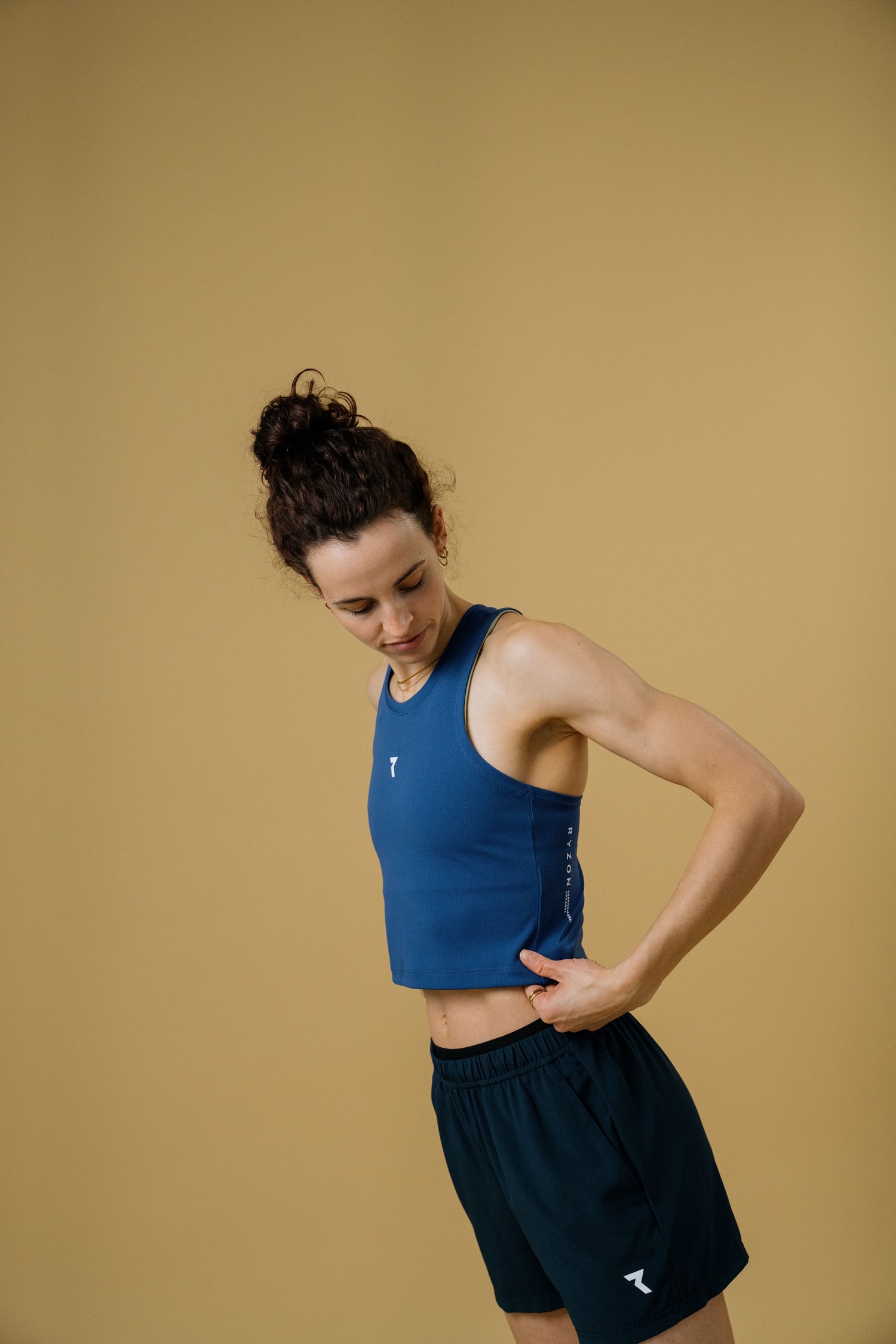
Fit
Running clothing should be lightweight and close-fitting without constricting you. Shirts, tights, or shorts with an ergonomic cut and flat seams reduce friction and ensure maximum comfort – whether you're running 5 or 25 kilometers. It's especially important that nothing chafes or slips, because even minor irritations can quickly become a problem when running.
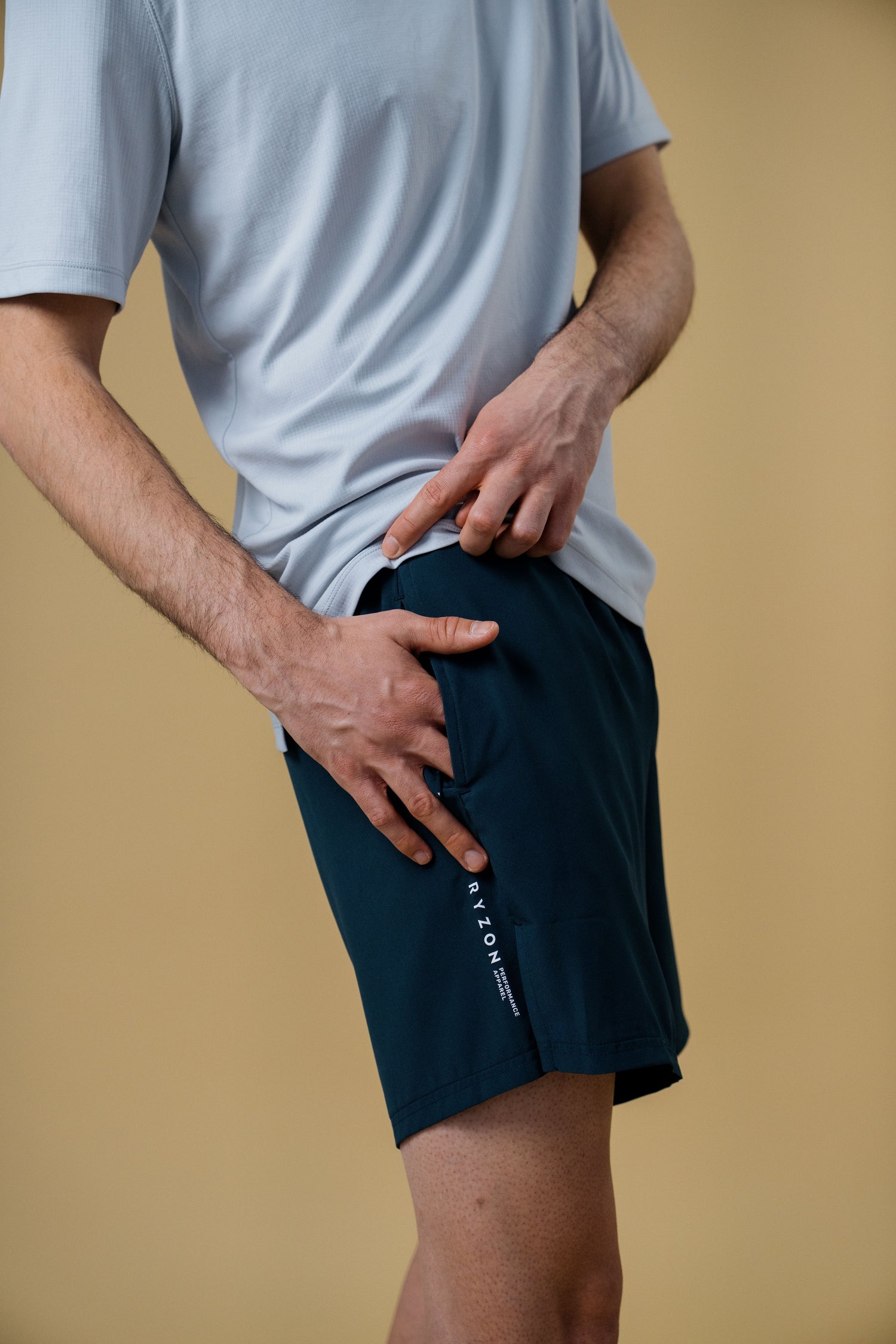
Layering
Running clothing should adapt to the seasons and conditions – not the other way around. The tried-and-tested 3-layer principle helps here:
- Baselayer : Directly on the skin – wicks away sweat, prevents friction
- Midlayer : In cold weather – insulates, warms, remains breathable
- Overlayer : Protects against wind, rain or snow – lightweight, compressible, water-repellent
Spring/Summer:
Lightweight mesh shirts, short tights or split shorts, caps, and sunglasses. Focus on UV protection and ventilation.
Autumn/Winter:
Long-sleeved shirts, thermal tights, windproof vests or softshell jackets, hats and gloves – with reflectors for visibility at dusk.
The optimal material for running clothing
The optimal materials for running clothing are characterized by specific properties that provide comfort, breathability, freedom of movement, and performance support. Here are some of the best materials and why they're suitable for running:
Collapsible content
Advantages : Polyester is a widely used material for sportswear. It's lightweight, durable, quick-drying, and wicks moisture well. This keeps the body dry, which is very important during exercise.
Why is it optimal? Polyester absorbs very little moisture, instead wicking sweat away from the skin, keeping it dry and preventing the body from cooling down. It's also easy to care for and retains its shape.
Advantages : Nylon is also a synthetic material known for its high durability, elasticity, and quick drying. It's soft and comfortable against the skin.
Why it's optimal? Nylon is excellent for sweaty activities because it wicks moisture well and is very durable, making it ideal for clothing that must withstand a lot of movement and stress.
Benefits : Elastane, also known as spandex or lycra, is extremely stretchy and can expand up to five times its original length. It ensures that athletic wear fits well and offers full freedom of movement.
Why is it optimal? It's often used in combination with other materials to add flexibility and elasticity to garments. It's also perfect for activities like yoga, dance, or strength training, where high mobility is important.
Benefits : Merino wool is a natural fiber especially valued for outdoor sports in colder conditions. It regulates temperature, absorbs moisture well, and is naturally odorless.
Why it's optimal? Merino wool provides warmth even when wet and wicks moisture away from the skin. It's also soft and doesn't itch like traditional wool, making it ideal for long outdoor activities.
Common mistakes and how to avoid them
Those who skimp on their running gear or choose the wrong product often pay with painful experiences. Watch out for these common mistakes:
Cotton clothing worn: absorbs sweat, dries slowly → increased risk of chafing & cooling
Jersey or shirt too wide: flutters, rubs, loses functionality
Too few reflectors: Danger during early morning or evening runs
Wrong choice of material in case of weather change: overheating or freezing possible
Poor fit in critical areas: knees, thighs, shoulders
The solution: high-quality running clothing tailored to your route, your body, and your conditions.
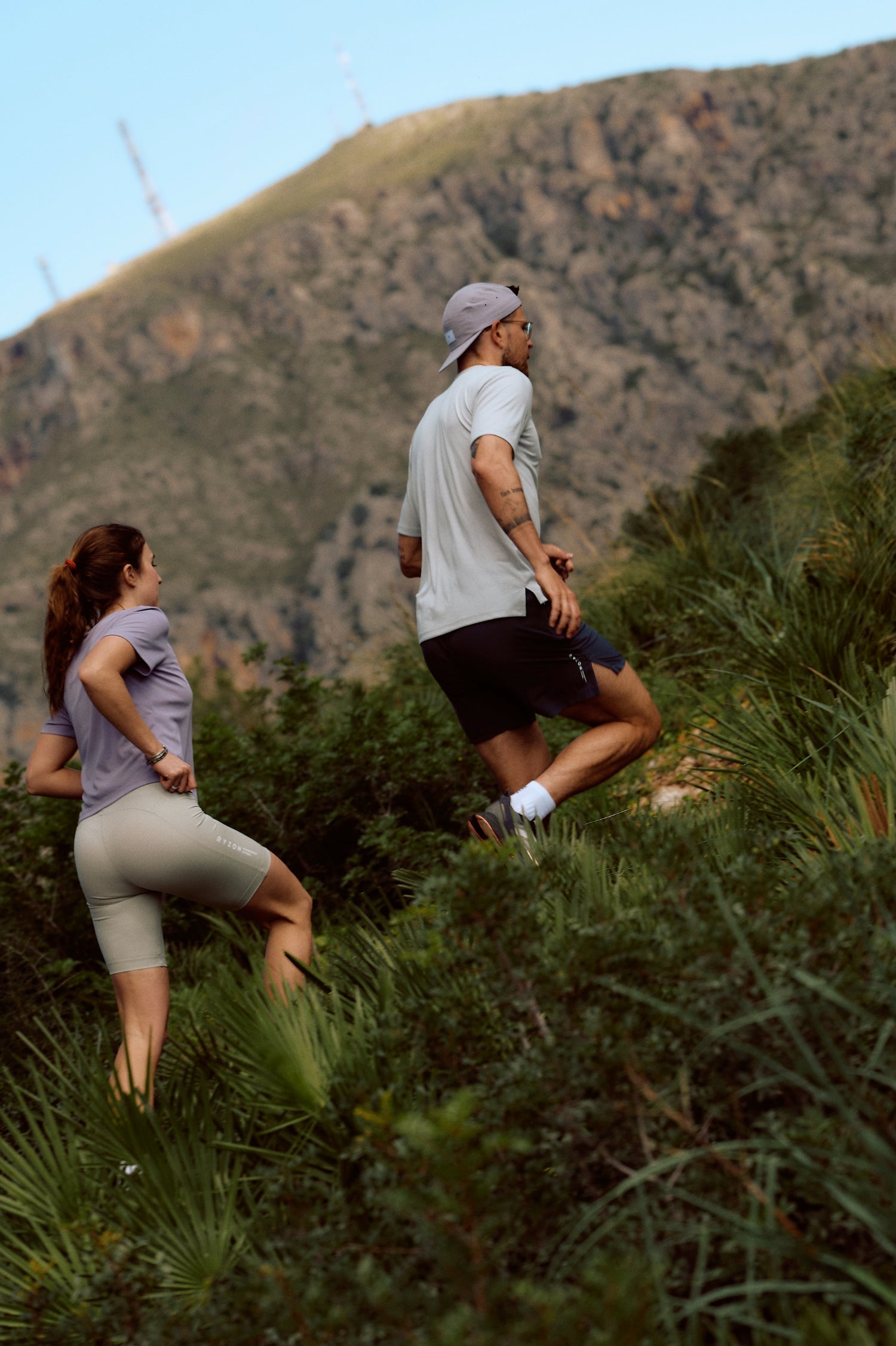
Further helpful tips
The Ryzon running collection stands for high-quality running apparel, specifically developed for the needs of modern athletes – with a clear focus on function, sustainability, and design. From your first easy run to intensive interval training, Ryzon accompanies you with performance fabrics, seamless technology, and a perfect fit.
Here is more helpful information:

